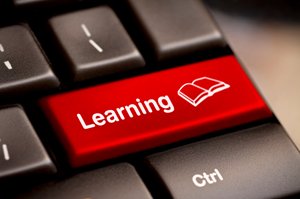Similar to content management systems (CMS) LMS' have experienced a degree of commoditisation that has increased the rate of adoption not just in the education sector but also by business.
The increasingly rich set of functionality offered by LMS has made platform differentiation more difficult, not least as the LMS vendors do not make it easy to compare “apples against apples”. Our experience of designing and developing LMS’ indicates that the top ten features needed for an effective learning system are:

1. Branding, co-branding and customisable interfaces
A modern LMS needs to provide interfaces that you can customise visually:
2. SCORM® (Shareable Content Object Reference Model) conformance and certification
To maximise the reuse and lifetime value of the learning resources that are created for or imported into the LMS, it is important that the LMS supports the SCORM standard. This will enable learning resources to easily be shared with different LMS’ and make platform upgrades quicker and easier.
The best LMS’ are SCORM certified rather than SCORM conformant. This means that the LMS has been validated by an independent and qualified third party using the ADL SCORM Conformance Test Suite.
3. Easy student and teacher registration
Students and teachers need to be able to register quickly and easily on their own. Additionally, the LMS needs to provide student and teacher bulk registration facilities. For example an administrator should be able to upload a spreadsheet of students or teachers that automatically registers the users, creates their logins and emails them their new access details.
4. Workflow and automated event alerts
The LMS should support alerting facilities for students and teachers both by email and internal system notification messages. The alerting system needs to be flexible enough to configure alerts ranging from project deadline reminders, class cancellations, new content updates, performance results to alerts for specific sets of users.
5. Course content migration and management
Many companies have invested significantly in the development of learning resources for specific courses. This makes it essential for an LMS to allow for the easy importing of learning resources in a variety of media formats and subsequently to be able to edit these resources.
The growth of video, audio, interactive games and activities alongside traditional file resources means that LMS must be able to support unlimited amounts of data storage.
6. Robust and flexible security
As the LMS will store information about students’ activities and performance, it is important that sensitive data is encrypted. Support of industry-standard authentication systems such as LDAP and Kerberos is also highly desirable as it will make integration with existing organisation security systems (or other third party systems) easier.
A role and permission based security model is also recommended to maximise flexibility and extensibility for report, course and learning module access.
7. System performance
Nothing makes a reluctant student lose motivation more quickly that watching a screen do nothing!
To ensure that their learning experience is beneficial and enjoyable, the LMS must be available, responsive, intuitive and quick to use for large volumes of users. Almost certainly, any LMS will need a load balanced or cloud based hosting solution.
8. Reporting and performance tracking
A comprehensive and extensible reporting suite should be available within the LMS. Reporting should not only consider student performance, but also provide insights into course usage, system performance and teaching staff performance.
9. Collaboration tools
From the advent of the open learning paradigm in the seventies to the coming of age of LMS – at the heart of modern education - lies collaboration. Any LMS must support the ability for students and teachers to easily share files, discuss projects, blog, message each other, create polls/surveys and integrate social media channels such as Facebook and Twitter (or disable social media channel access for younger students)
10. Badges and certificates
Leaderboards, badges, achievements and trophies sound like something out of sports or online gaming! Indeed they are, but they are also integral to LMS’ as they are powerful motivators for students.
Students get a kick out of getting a reward for achieving something – which may be as simple as a badge that reflects an interim goal or something as formal as a course completion certificate.
How much does an LMS cost?
The value gained for a well implemented and managed LMS cannot be overstated but it is important to note that there are three main pricing models:
-
Seat-based which is where a fee is charged for every unique user
-
Usage-based is more of a utility based approach where the fee is calculated based on how many and how long users access the LMS for
-
Storage-based is simply on the amount of disk space used by the LMS resources and assets
There other nuances with LMS platform evaluation but we feel that these factors are the top ten to consider. Have we missed any? If so we’re keen to hear of any suggestions!